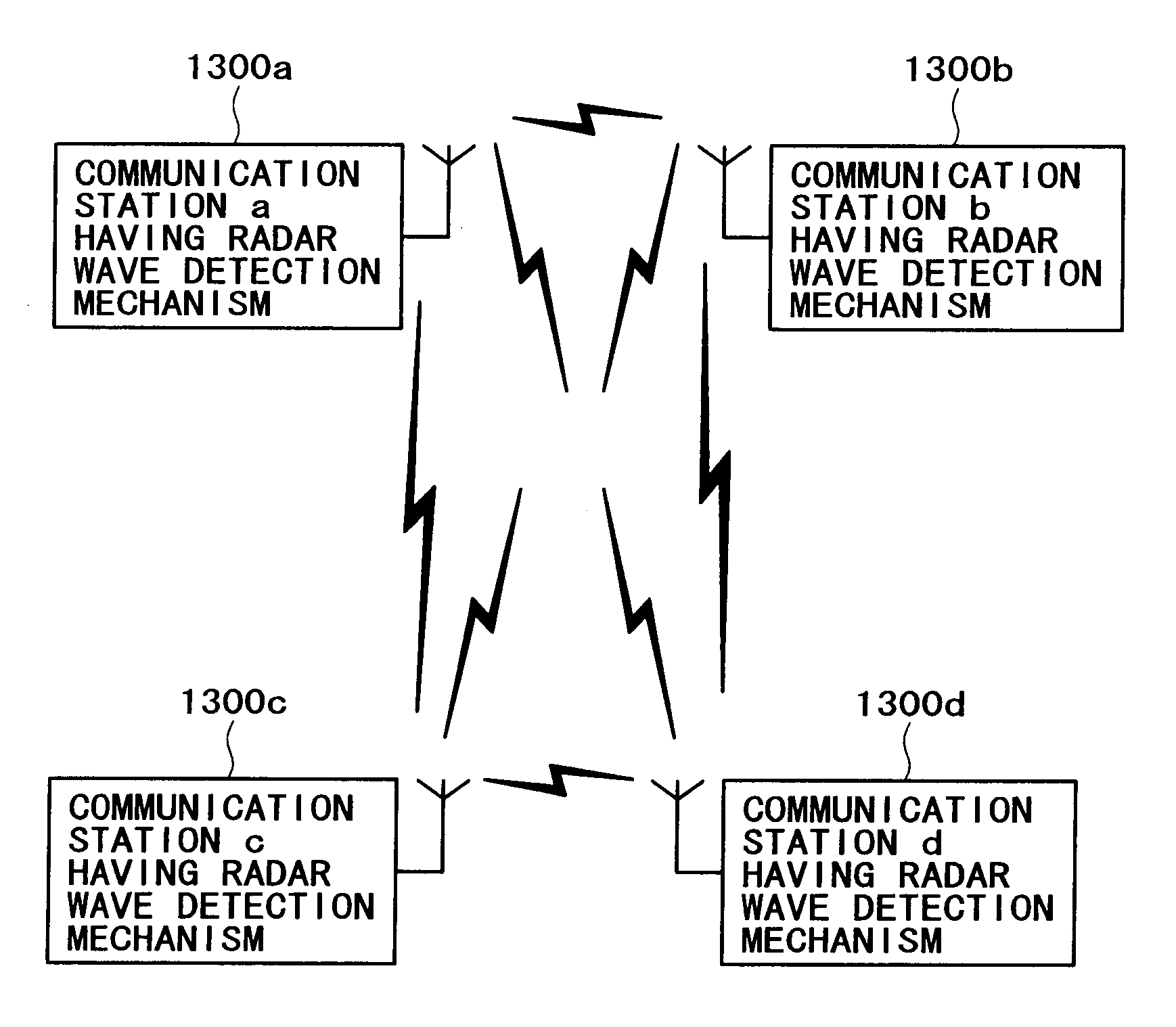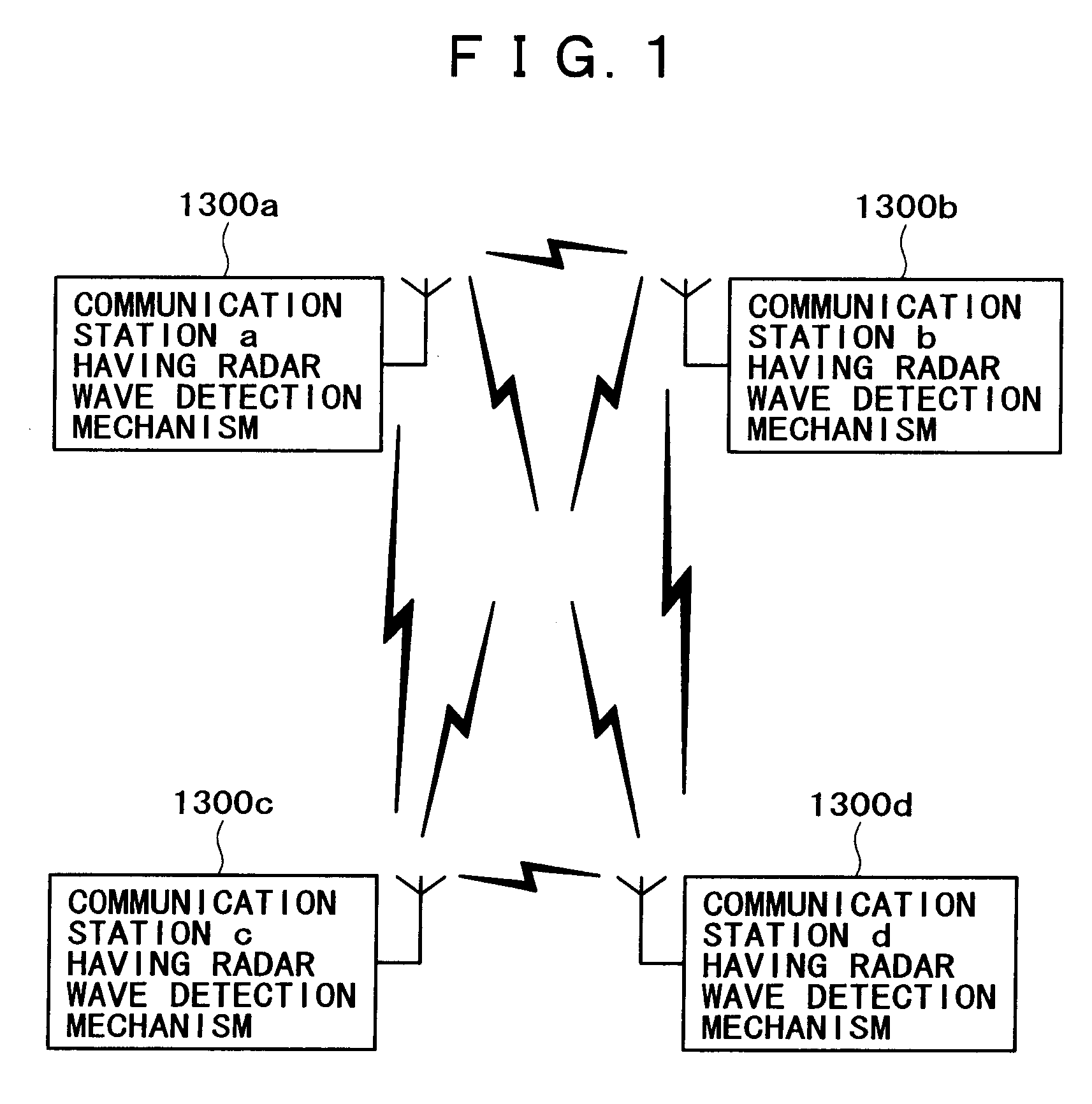Wireless communication system, wireless communication apparatus, wireless communication method, and computer program
a wireless communication system and wireless communication technology, applied in the field of wireless communication systems, wireless communication apparatuses, wireless communication methods, computer programs, can solve the problems of increasing overall system power consumption, time consuming, and reducing the efficiency of detecting radar waves, so as to prevent radar wave interference with increased certainty, reduce the average power consumption of communication stations, and efficiently detect radar waves
- Summary
- Abstract
- Description
- Claims
- Application Information
AI Technical Summary
Benefits of technology
Problems solved by technology
Method used
Image
Examples
Embodiment Construction
[0085] Embodiments of the present invention will now be described with reference to the accompanying drawings.
[0086] The present invention assumes that a wireless communication path is used to establish a network among a plurality of communication stations. The present invention also assumes that store-and-forward traffic is used for communication, and that information is transferred in packets. Although the following explanation assumes that each communication station uses a single channel, the present invention can also be applied to a case where a multi-channel transmission medium is used to handle a plurality of frequency channels.
[0087] In a wireless network according to the present invention, transmission (MAC) frames having a moderate time-division multiple access structure are used to exercise transmission control while effectively using a channel resource. Each communication station can transmit information directly and asynchronously by performing an access procedure bas...
PUM
 Login to View More
Login to View More Abstract
Description
Claims
Application Information
 Login to View More
Login to View More - R&D
- Intellectual Property
- Life Sciences
- Materials
- Tech Scout
- Unparalleled Data Quality
- Higher Quality Content
- 60% Fewer Hallucinations
Browse by: Latest US Patents, China's latest patents, Technical Efficacy Thesaurus, Application Domain, Technology Topic, Popular Technical Reports.
© 2025 PatSnap. All rights reserved.Legal|Privacy policy|Modern Slavery Act Transparency Statement|Sitemap|About US| Contact US: help@patsnap.com



